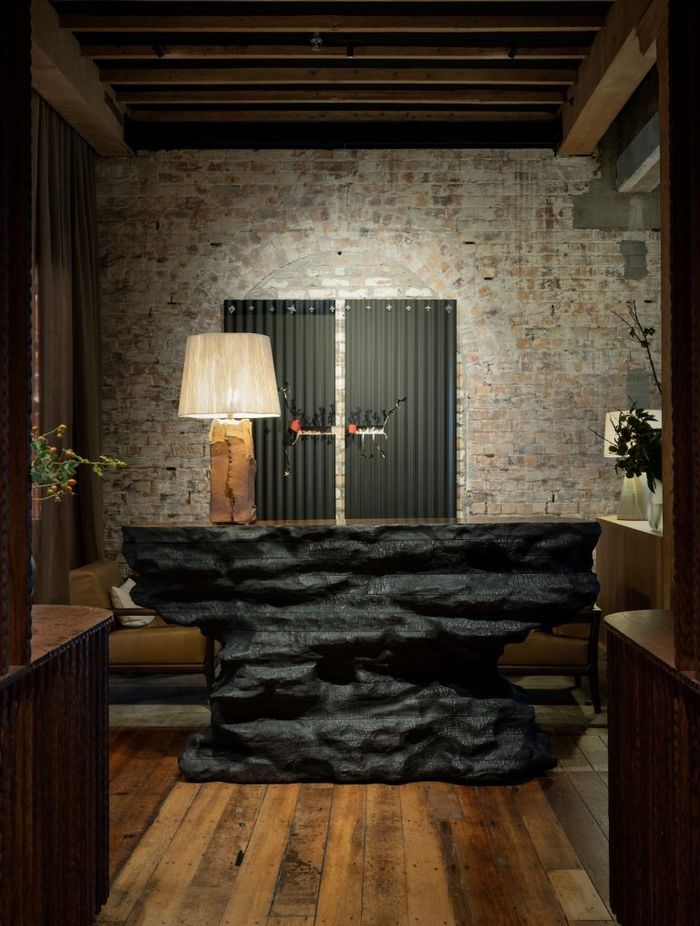How to create hotel-style lighting at home, with tips from the experts
Written by
25 October 2023
•
5 min read
Stepping into a softly lit hotel room is a feeling like no other. Outside, the world hurries by; inside, you are free to indulge in the luxury of fluffy towels, room service, and carefully curated mood lighting. Hotel lighting is, of course, an art — and the lighting consultants at Targetti are experts.
“Good ambient lighting in hotel interior design is essential for creating a welcoming, functional, and visually pleasing environment that enhances the guest experience and aligns with the hotel's brand and objectives,” says Targetti lighting consultant, Ardy Phillips. “It plays a pivotal role in setting the right mood, ensuring safety and navigation, and highlighting the design elements that make the hotel unique.”
Fortunately, you don’t have to wait for your next vacation to enjoy the warm glow of a well-placed sconce. With advice from those who know them best, the principles of hotel lighting can be just as easily applied at home. To learn more, ArchiPro spoke with Ardy Phillips about the key considerations for hotel lighting and how to replicate it in residential spaces.


Nine keys to good hotel lighting
Hotel brand and style: Good lighting design should reflect the hotel's brand identity and overall style. For example, a luxury hotel may opt for elegant and opulent lighting fixtures, while a boutique hotel may prefer unique and eclectic designs.
Functionality and purpose: Identifying the specific functions and purposes of each space within the hotel is a primary consideration. Different areas, such as the guest rooms, lobby, restaurants, corridors, and outdoor spaces may require different types of lighting to meet their unique needs.
Guest comfort: The comfort and well-being of guests is key to a positive experience, so it’s important to choose lighting that creates a welcoming and comfortable atmosphere. Soft and warm lighting in guest rooms can promote relaxation, while well-lit common areas provide a sense of security and wayfinding.
Quality of light: The quality of the lighting is a critical aspect, especially when considering guest comfort. It is crucial to select high-quality luminaires equipped with advanced optical systems that effectively illuminate the entire space, as this ensures the environment is comfortable and free from glare, and requires minimal maintenance expenses. Additionally, prioritising a high Colour Rendering Index (CRI) is essential to ensure that textures and colours are presented in their most vibrant and true-to-life form.
Lighting levels: It’s important to determine appropriate lighting levels for each space. Guest rooms may require adjustable lighting with multiple settings to cater to various guest preferences, while public areas may need consistent and well-balanced lighting.
Colour temperature: Considering the colour temperature of the lighting is also key. Warmer colour temperatures (around 2700K, sometimes even 2400K) create a cosy and inviting ambiance, while cooler temperatures (4000K and above) are used for back of house functionality.
Control systems: Installing lighting control systems provides flexibility and adaptability. Dimmers, timers, and sensors can help adjust lighting levels based on the time of day, occupancy, and the specific needs of each space.
Durability and maintenance: Consider the durability and maintenance requirements of lighting fixtures. In high-traffic areas or outdoor spaces, choose fixtures that can withstand environmental conditions and require minimal upkeep. The initial investment may be higher, however, this will quickly be recovered in the reduction of maintenance required.
Aesthetics and integration: Lighting fixtures should seamlessly integrate with the overall interior design. They can serve as design elements themselves, or complement other design features such as furniture, artwork, or architectural details.

Nine tips to achieve hotel-style lighting at home
Start with a lighting plan: Begin by creating a comprehensive lighting plan that outlines the purpose of each space and the desired ambiance. Identify areas for ambient, task, and accent lighting.
Layered lighting: Use a combination of ambient, task, and accent lighting to create depth and flexibility in your lighting design. Ambient lighting sets the overall mood, while task and accent lighting provide functionality and visual interest.
Ambient lighting fixtures: Similar to lighting in line with a hotel’s brand and style, it’s important to choose ambient lighting fixtures that complement your home’s interior style. Chandeliers, pendant lights, wall sconces, and recessed lighting are common choices for stylised ambient lighting.
Warm colour temperature: Opt for warm colour temperatures (around 2700K) for ambient lighting. Warm light creates a cosy and inviting atmosphere, similar to the warm and comfortable feel of many hotel lobbies and guest rooms. Selecting warm, dim lights can also provide a range of colour temperatures.
Fixture placement: In order to evenly distribute light throughout the room, it’s important to pay attention to the placement of fixtures, and ensure you install your ambient lighting fixtures strategically. Considering factors such as ceiling height and room size will help you achieve even distribution.
Layer with task lighting: Incorporate task lighting where needed, such as under-cabinet lighting in the kitchen, reading lamps in the living room, or under-vanity lighting in the bathroom. These provide functional illumination for specific tasks.
Accent lighting: Use accent lighting to highlight architectural features, artwork, or other design elements. Wall washers, spotlights, or track lighting can draw attention to focal points, materials and textures of significance in the room.
Integrated lighting control: Implement lighting control systems that allow you to adjust the lighting levels and create different scenes. This can be especially useful for entertaining or setting a romantic mood.
Use layers for depth: Experiment with multiple layers of ambient lighting. For example, combining recessed ceiling lights with pendant lights is a great way to create depth and interest overhead, while a statement floor lamp paired with a table lamp can add a playful dynamic to a reading nook or informal lounge.
Learn more about Targetti.